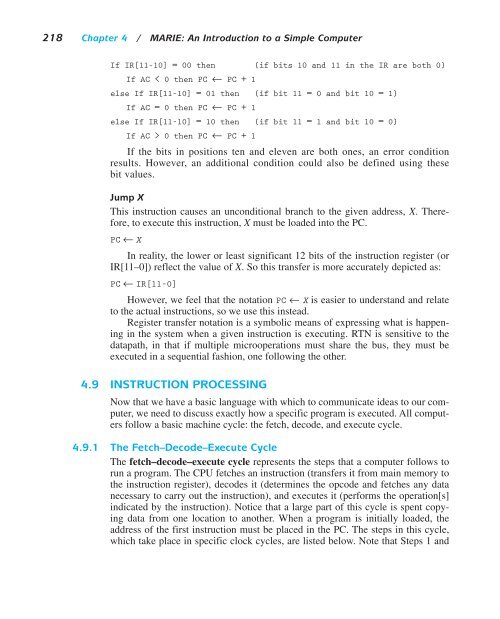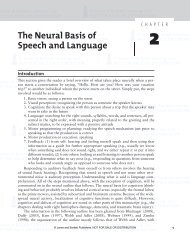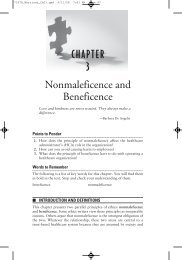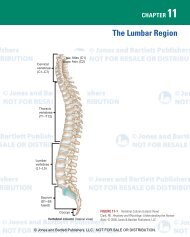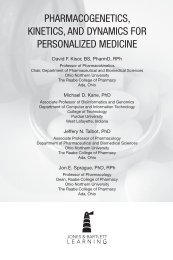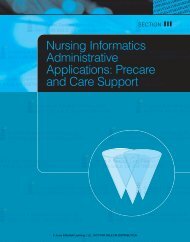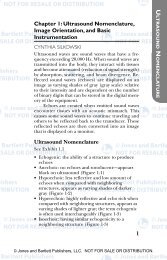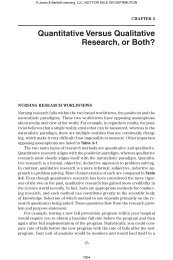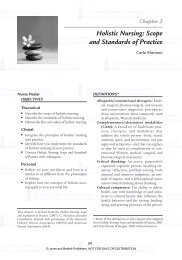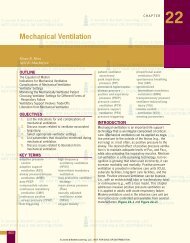An Introduction to a Simple Computer - Jones & Bartlett Learning
An Introduction to a Simple Computer - Jones & Bartlett Learning
An Introduction to a Simple Computer - Jones & Bartlett Learning
Create successful ePaper yourself
Turn your PDF publications into a flip-book with our unique Google optimized e-Paper software.
00068_CH04_Null.qxd 10/18/10 12:03 PM Page 218<br />
218 Chapter 4 / MARIE: <strong>An</strong> <strong>Introduction</strong> <strong>to</strong> a <strong>Simple</strong> <strong>Computer</strong><br />
If IR[11–10] = 00 then {if bits 10 and 11 in the IR are both 0}<br />
If AC < 0 then PC ← PC + 1<br />
else If IR[11–10] = 01 then {if bit 11 = 0 and bit 10 = 1}<br />
If AC = 0 then PC ← PC + 1<br />
else If IR[11–10] = 10 then {if bit 11 = 1 and bit 10 = 0}<br />
If AC > 0 then PC ← PC + 1<br />
If the bits in positions ten and eleven are both ones, an error condition<br />
results. However, an additional condition could also be defined using these<br />
bit values.<br />
Jump X<br />
This instruction causes an unconditional branch <strong>to</strong> the given address, X. Therefore,<br />
<strong>to</strong> execute this instruction, X must be loaded in<strong>to</strong> the PC.<br />
PC ← X<br />
In reality, the lower or least significant 12 bits of the instruction register (or<br />
IR[11–0]) reflect the value of X. So this transfer is more accurately depicted as:<br />
PC ← IR[11–0]<br />
However, we feel that the notation PC ← X is easier <strong>to</strong> understand and relate<br />
<strong>to</strong> the actual instructions, so we use this instead.<br />
Register transfer notation is a symbolic means of expressing what is happening<br />
in the system when a given instruction is executing. RTN is sensitive <strong>to</strong> the<br />
datapath, in that if multiple microoperations must share the bus, they must be<br />
executed in a sequential fashion, one following the other.<br />
4.9 INSTRUCTION PROCESSING<br />
Now that we have a basic language with which <strong>to</strong> communicate ideas <strong>to</strong> our computer,<br />
we need <strong>to</strong> discuss exactly how a specific program is executed. All computers<br />
follow a basic machine cycle: the fetch, decode, and execute cycle.<br />
4.9.1 The Fetch–Decode–Execute Cycle<br />
The fetch–decode–execute cycle represents the steps that a computer follows <strong>to</strong><br />
run a program. The CPU fetches an instruction (transfers it from main memory <strong>to</strong><br />
the instruction register), decodes it (determines the opcode and fetches any data<br />
necessary <strong>to</strong> carry out the instruction), and executes it (performs the operation[s]<br />
indicated by the instruction). Notice that a large part of this cycle is spent copying<br />
data from one location <strong>to</strong> another. When a program is initially loaded, the<br />
address of the first instruction must be placed in the PC. The steps in this cycle,<br />
which take place in specific clock cycles, are listed below. Note that Steps 1 and


